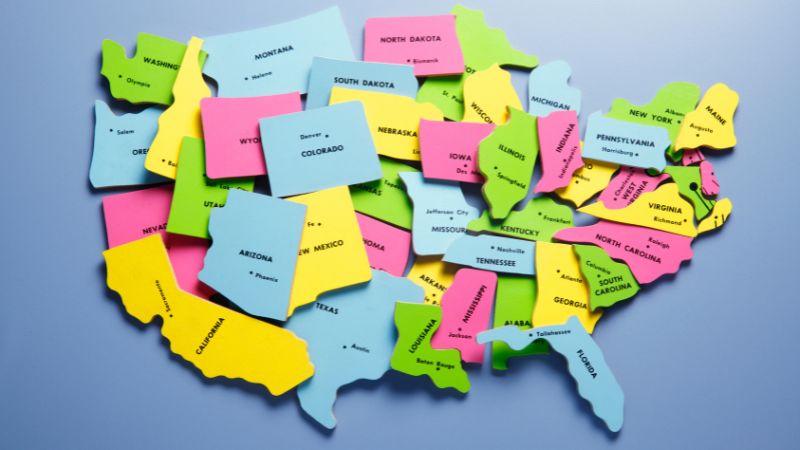In the complex world of U.S. immigration, self-petition options like EB-1A (Extraordinary Ability) and EB-2 NIW (National Interest Waiver) stand out as powerful pathways for exceptional individuals to obtain permanent residency. These categories allow applicants to bypass the traditional labor certification process, offering a more direct route to a green card. However, with this opportunity comes the challenge of effectively demonstrating your qualifications and value to the United States. In this comprehensive guide, we’ll explore strategies for crafting compelling reference letters and cover letters that can significantly strengthen your EB-1A or EB-2 NIW petition. And if you want us to help, our expert writers and journalists can assist you in crafting persuasive and impactful cover letters and reference letters.
Understanding EB-1A and EB-2 NIW: Key Differences and Similarities
Before diving into the specifics of letter writing, it’s crucial to understand the distinctions between these two categories:
EB-1A (Extraordinary Ability)
- Targeted at individuals with extraordinary ability in sciences, arts, education, business, or athletics
- Requires national or international acclaim
- Applicant must demonstrate sustained acclaim and achievements
EB-2 NIW (National Interest Waiver)
- For professionals with advanced degrees or exceptional ability in sciences, arts, or business
- Applicant must show that their work is in the national interest of the United States
- Less stringent than EB-1A but still requires significant achievements
Despite their differences, both categories share the need for strong evidence of the applicant’s qualifications and potential contributions to the United States. If you are not an asset to the U.S., why would they want you as their citizens? Get the drift?

Crafting Powerful Reference Letters
Reference letters play a crucial role in both EB-1A and EB-2 NIW petitions. They provide third-party validation of your achievements and potential. Here’s how to approach them for each category:
EB-1A Reference Letters
- Choose the Right Recommenders:
- Seek letters from internationally recognized experts in your field
- Include letters from individuals who have not directly worked with you to demonstrate broad impact
- Content Focus:
- Emphasize your extraordinary ability and how it sets you apart from others in your field
- Provide specific examples of your groundbreaking work or contributions
- Highlight any awards, publications, or patents that demonstrate your acclaim
- Quantify Impact:
- Include metrics that showcase the reach or influence of your work
- Mention any citation counts, impact factors, or industry-specific measures of success
Example: “Dr. Smith’s revolutionary algorithm has been cited over 500 times in the past two years, demonstrating its profound impact on the field of artificial intelligence.”
EB-2 NIW Reference Letters
- Diverse Perspectives:
- Include letters from experts in your field, but also consider letters from individuals who can speak to the broader impact of your work
- Seek recommenders who can attest to the national importance of your contributions
- Content Focus:
- Emphasize how your work serves the national interest of the United States
- Describe the potential applications or benefits of your research or expertise
- Highlight your unique skills or knowledge that are valuable to the U.S.
- Future Projections:
- Discuss the potential future impacts of your work on your field or on U.S. interests
- Explain why it’s important for you to continue your work in the U.S.
Example: “Ms. Johnson’s innovative renewable energy research has the potential to reduce U.S. dependence on fossil fuels by 20% over the next decade, aligning perfectly with national energy security goals.”
Writing a Compelling Cover Letter
Your cover letter is your opportunity to tie all the evidence together and make a persuasive case for your petition. Here’s how to approach it for each category:
EB-1A Cover Letter
- Opening Statement:
- Clearly state that you’re applying for EB-1A classification
- Provide a brief overview of your field and your position within it
- Body:
- Address each of the regulatory criteria for EB-1A, providing evidence for at least three
- Use confident language that leaves no doubt about your extraordinary ability
- Highlight your most significant achievements and their impact on your field
- Future Plans:
- Outline your intentions for continuing your work in the U.S.
- Explain how your presence will benefit your field and the country
- Conclusion:
- Reiterate your qualifications for EB-1A classification
- Express your commitment to contributing to your field in the United States
Key Phrase: “As evidenced by my Nobel Prize nomination and over 100 peer-reviewed publications, I have risen to the very top of the field of quantum physics.”

EB-2 NIW Cover Letter
- Opening Statement:
- Clearly state that you’re seeking a National Interest Waiver
- Briefly introduce your field and your significant contributions
- Body:
- Address the three prongs of the NIW criteria:
a. Your work has substantial merit and national importance
b. You are well-positioned to advance your proposed endeavor
c. On balance, it would be beneficial to the U.S. to waive the job offer and labor certification requirements - Provide specific examples and evidence for each prong
- National Interest:
- Clearly articulate how your work serves the national interest
- Connect your achievements to broader U.S. goals or challenges
- Conclusion:
- Summarize why granting you a National Interest Waiver would benefit the United States
- Express your commitment to advancing your field within the U.S.
Key Phrase: “My breakthrough in sustainable agriculture techniques has the potential to increase crop yields by 30% while reducing water usage, directly addressing U.S. food security and environmental conservation priorities.”
General Tips for Both Categories
- Be Specific: Use concrete examples, data, and achievements rather than general statements.
- Maintain Consistency: Ensure that your cover letter, reference letters, and all other documents tell a cohesive story.
- Address Potential Weaknesses: If there are any gaps or potential issues in your application, address them proactively and positively.
- Use Layman’s Terms: While it’s important to be technical where necessary, ensure that a non-expert can understand the significance of your work.
- Proofread Carefully: Given the high stakes of these applications, even small errors can be detrimental. Consider professional editing.
- Stay Updated: Immigration policies can change. Ensure you’re following the most current USCIS guidelines for your category.
- Pay The Right Fees: Double check that your USCIS application fees match the specific category you are applying under to avoid delays. One of our client’s application got rejected due to “improper fees”.
- Stick To The Format: To avoid application delays like a recent client who received an RFE, ensure all recommendation letters include the recommender’s contact information (email and phone number).
Conclusion: Crafting Your Path to Success
Navigating the EB-1A and EB-2 NIW petition process requires a delicate balance of confidence, evidence, and persuasive writing. Your reference letters and cover letter are not mere formalities; they are powerful tools to showcase your extraordinary abilities or the national importance of your work.
Remember, while these categories offer the advantage of self-petition, they also demand a higher standard of evidence. Every word in your application should contribute to painting a picture of an individual whose presence in the United States is not just beneficial, but mighty essential.
By following these guidelines and tailoring them to your unique achievements and contributions, you can create a compelling case for your green card petition. However, given the complexity and high stakes of these applications, it’s often beneficial to seek professional guidance. An experienced immigration attorney can provide invaluable insights, helping you navigate potential pitfalls and maximize your chances of success. And if you need to cut costs and ‘self petition’, you can come to us in assisting you with writing cover letters and reference letters.
Your journey to permanent residency in the United States is more than just a personal goal; it’s an opportunity to contribute your extraordinary talents to a nation that values innovation and excellence. Approach your EB-1A or EB-2 NIW petition with the same level of dedication and attention to detail that has brought you success in your field, and you’ll be well on your way to calling the United States your permanent home.

